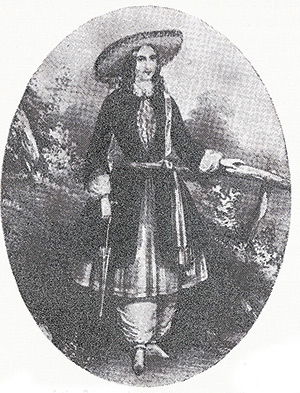A Stylish History of Protest
Richard Weight reassesses Quentin Bell’s 1951 article on the morality of fashion, which anticipated the enormous social and stylistic changes of the 1960s.
 Style matters. That was the conclusion of Quentin Bell’s study of dress reform, published in the third issue of History Today in 1951. His article was written on the eve of an age when fashion became available to nearly everyone for the first time, thanks to mass production, television, affluence and the birth of modern youth culture, which tailored all those developments to fit a restless body of postwar Britons: young men and women of all classes and colours, keen to express their aspirations and frustrations through the clothes they wore.
Style matters. That was the conclusion of Quentin Bell’s study of dress reform, published in the third issue of History Today in 1951. His article was written on the eve of an age when fashion became available to nearly everyone for the first time, thanks to mass production, television, affluence and the birth of modern youth culture, which tailored all those developments to fit a restless body of postwar Britons: young men and women of all classes and colours, keen to express their aspirations and frustrations through the clothes they wore.
‘The history of dress is a history of protests’, Bell observed. But this was not the protest of the sharp-suited mod, the spiky punk or the ‘baggy’ raver against class prejudice and the boredom of work that characterised British youth tribes. Bell’s subject was ‘the great diatribe against the tyranny of fashions’ by those who felt restricted by it. He identified two drivers of ‘dress reform’ over the centuries: medical and moral. The first was a belief that restrictive clothing could damage the circulation and vital organs. This lay behind the founding of the Rational Dress Society in 1888, which also reported the difficulty of wearing a train and bustle while escaping a theatre on fire.
Victorian dress loosened a little as women began cycling and playing tennis, with ‘bloomers’ briefly being named ‘rationals’. But, said Bell: ‘All these improvements were contradicted by a degree of tight lacing, a constriction of the body from the breasts to the hips, which equalled the cruellest deformations of any age.’ Not surprisingly, the state of being ‘tight laced’, to denote someone who is emotionally and sexually repressed, became a post-Victorian metaphor for stuffy, stuck-up Britain.
The moral aspect of dress reform was Bell’s other concern. A distaste for vanity and foppish display has united puritans of all faiths in all periods. Sir Thomas More noticed ‘much new-fangleness in apparel’ in the early 16th century and his remedy for that in Utopia (1516) was for people to dress the same, with slight variations to mark the wearer as male or female, married or unmarried. A cynic might argue that the celebrity-driven, throwaway fashion of the late-20th century consumer society achieved by default the uniformity that More desired on moral grounds.
Regency dandies aside, fashion remained the preserve of women in 19th-century Britain. Shopping in general was seen as an essentially female activity, with any man who spent too much time on grooming and dressing regarded as effete or, worse, homosexual – an outlook that fin de siècle dandies like Oscar Wilde did not dispel. ‘The aristocrat was replaced by the businessman, who might decorate his women, his servants and his other belongings but never himself’, observed Bell. ‘The sober dress of the English squire was sufficient for his purposes; it was imitated throughout the world.’
Since that was written in 1951 the global reach of British fashion has become wider still (the annual value of British fashion exports rose from £11 million to £84 million in the 20 years to 1969). However it is not the sober dress of the English squire that now impresses foreigners, but the more imaginative clothing of what is known as ‘street style’. A mere four years after Bell’s article Mary Quant opened her boutique ‘Bazaar’ in the King’s Road, starting a revolution in the head as much as one in retailing. In 1966 she claimed that ‘snobbery has gone out of fashion and in our shops you will find duchesses jostling with typists to buy the same dresses’. It was no idle boast: British youth styles, especially that of ‘Mod’, which she championed, did make fashion a more classless pursuit. Meanwhile her gay Glaswegian friend, John Stephen, the so-called ‘King of Carnaby Street’, made it acceptable for heterosexual men to dress colourfully, their clothes forming part of a broader reformation of British masculinity in the late 20th century.
Quentin Bell concluded: ‘To alter the clothes of society we must alter the structure of society.’ Few would claim that style can do more than rebuke established social structures; but clothes no longer depend on them to give the wearer status. Like it or not, if you say the words ‘rational dress’ to anyone nowadays they’ll probably think of someone who colour co-ordinates too much.




